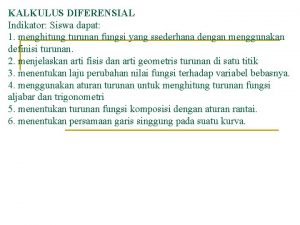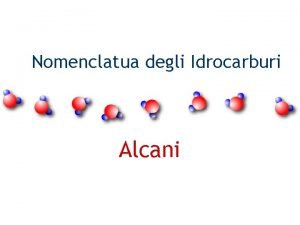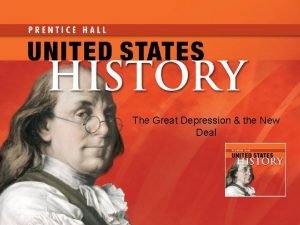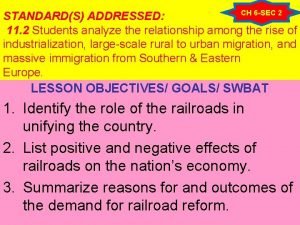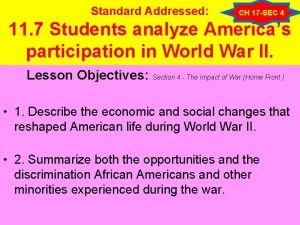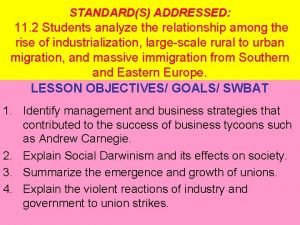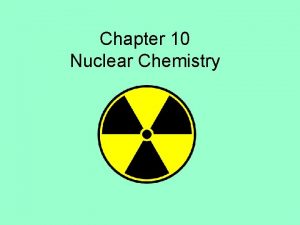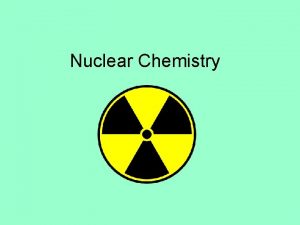STANDARDS ADDRESSED CH 6 SEC 1 11 2










































- Slides: 42

STANDARD(S) ADDRESSED: CH 6 -SEC 1 11. 2 Students analyze the relationship among the rise of industrialization, large-scale rural to urban migration, and massive immigration from Southern and Eastern Europe. LESSON OBJECTIVES/ GOALS/ SWBAT 1. Explain how the abundance of natural resources, new recovery and refining methods, and new uses for them led to intensive industrialization. 2. Identify inventions that changed the way people lived and worked.


Section 1 The Expansion of Industry At the end of the 19 th century, natural resources, creative ideas, and growing markets fuel an industrial boom. NEXT

SECTION 1 The Expansion of Industry Natural Resources Fuel Industrialization The Growth of Industry • By 1920 s, U. S. is world’s leading industrial power, due to: - wealth of natural resources - government support for business - growing urban population Continued. . . NEXT

SECTION 1: A New Industrial Age • Natural resources and new ideas create a boom for industry and railroads. Government addresses corruption in business, and laborers organize for better working conditions.

THE EXPANSION OF INDUSTRY At the end of the 19 th century, natural resources, creative ideas, and growing markets fuel an industrial boom. • After the Civil War (1865) the U. S. was still largely agriculture • By 1920, the U. S. was the leading industrial power in the world • This enormous growth was due to three factors; – 1) Natural Resources – 2) Governmental support – 3) Urbanization

Natural Resources Fuel Industrialization The Growth of Industry • By 1920 s, U. S. is world’s leading industrial power, due to: - wealth of natural resources - government support for business - growing urban population

• After the Civil War, the United States was still a mostly rural nation. • By the 1920’s it had become a leading industrial nation of the world. • This immense change was caused by three major factors.

Factor 1: Abundant Natural Resources 1. Which resources played crucial roles in industrialization? Crude oil; iron ore; coal

SECTION 1 The Expansion of Industry Natural Resources Fuel Industrialization Black Gold • Pre-European arrival, Native Americans make fuel, medicine from oil • 1859, Edwin L. Drake successfully uses steam engine to drill for oil • Petroleum-refining industry first makes kerosene, then gasoline Continued. . . NEXT

Natural Resources Fuel Industrialization BLACK GOLD • Pre-European arrival, Native Americans make fuel, medicine from oil • 1859, Edwin L. Drake successfully uses steam engine to drill for oil • Petroleum-refining industry first makes kerosene, then gasoline

Natural Resources Fuel Industrialization • In 1859, Edwin Drake used a steam engine to drill for oil • This breakthrough started an oil boom in the Midwest and later Texas • At first the process was limited to transforming the oil into kerosene and throwing out the gasoline -a by-product of the process • Later, the gasoline was used for cars

Factor 1: Abundant Natural Resources 2. How did Edwin Used a steam engine to extract L. Drake help oil from beneath industry to the earth's surface acquire larger quantities of oil?

SECTION 1 continued Natural Resources Fuel Industrialization Bessemer Steel Process • Abundant deposits of coal, iron spur industry • Bessemer process puts air into iron to remove carbon to make steel • Later open-hearth process makes steel from scrap or raw materials NEXT

Bessemer Steel Process Abundant deposits of coal, iron spur industry • Bessemer process puts air into iron to remove carbon to make steel • Later open-hearth process makes steel from scrap or raw materials BESSEMER CONVERTOR CIRCA 1880

• Oil was not the only valuable natural resource • Coal and iron were plentiful within the U. S. • When you removed the carbon from iron, the result was a lighter, more flexible and rust resistant compound – Steel • The Bessemer process did just did (Henry Bessemer & William Kelly)

Factor 1: Abundant Natural Resources Was a cheap, 3. How did the efficient method Bessemer for turning iron process allow ore into steel better use of iron ore?

SECTION 1 continued Natural Resources Fuel Industrialization New Uses for Steel • Steel used in railroads, barbed wire, farm machines • Changes construction: Brooklyn Bridge; steel-framed skyscrapers NEXT

STEEL New Uses for Steel • Steel used in railroads, • barbed wire, • farm machines • Changes construction: • Brooklyn Bridge; • steel-framed skyscrapers

NEW USES FOR STEEL • The railroads, with thousands of miles of track, were the biggest customers for steel • Other uses emerged: bridge construction (Brooklyn Bridge 1883), and the first skyscrapers BROOKLYN BRIDGE SPANS 1595 FEET IN NYC

American skyscraper • William Le Baron Jenney was an American architect and engineer who is known for building the first skyscraper in 1884 and became known as the Father of the American skyscraper.

Factor 1: Abundant Natural Resources 4. What new uses for steel were developed at this time? Railroads; barbed wire; farm machines; bridge and skyscraper construction

CH 6: 1 • A – What natural resources were most important for industrialization? – Oil, coal, iron ore, water. • Why are these resources important? – Spurred growth in various industries.

SECTION 1 Inventions Promote Change An Age of Inventions • Numerous new inventions change the landscape, life, work Continued. . . NEXT

An Age of Inventions: List all of the technological inventions of between 1826 to 1903. • • • Photograph Reaper Telegraph Sewing machine Internal combustion Engine • Dynamite • Typewriter • Electric Motor • • Electric Motor Telephone Phonograph Light bulb Radio Motion pictures X-ray Airplane

SECTION 1 Inventions Promote Change The Power of Electricity • 1876, Thomas Alva Edison establishes first research laboratory - 1880, patents incandescent light bulb - creates system for electrical production, distribution • Electricity changes business; by 1890, runs numerous machines • Becomes available in homes; encourages invention of appliances • Allows manufacturers to locate plants anyplace; industry grows Continued. . . NEXT

Thomas Alva Edison the wizard of Menlo park – Set up a research laboratory; – Perfected the incandescent light bulb; – Created a system for producing and distributing electrical power; – Built power plants.

Factor 2: Increasing Number of Inventions 5. How did Thomas Alva Edison contribute to this development? Set up a research laboratory; perfected the incandescent light-bulb; created a system for producing and distributing electrical power; built power plants

An Age of Inventions: List all of the technological inventions of between 1826 to 1903. • • • Photograph Reaper Telegraph Sewing machine Internal combustion Engine • Dynamite • Typewriter • Electric Motor • • Electric Motor Telephone Phonograph Light bulb Radio Motion pictures X-ray Airplane

Internal combustion engine

THE POWER OF ELECTRICITY • 1876, Thomas Alva Edison establishes first research laboratory - 1880, patents incandescent light bulb - creates system for electrical production, distribution • Electricity changes business; by 1890, runs numerous machines • Becomes available in homes; encourages invention of appliances • Allows manufacturers to locate plants anyplace; industry grows

THE POWER OF ELECTRICITY • 1876 - Thomas Alva Edison established the world’s first research lab in New Jersey • Edison was a prolific inventor, holding 1, 093 US patents in his name • The DC supply system provided electricity supplies to street lamps and several private dwellings within a short distance of the station. • On January 19, 1883, the first standardized incandescent electric lighting system employing overhead wires began service in Roselle, New Jersey.

CH 6: 1 • B – How did electricity change American life? – It changed the nature of business, – made possible the invention of new appliances, – and helped cities and industries to grow.

George Westinghouse, Jr • An American entrepreneur and engineer who invented the railway air brake and was a pioneer of the electrical industry. Westinghouse was one of Thomas Edison's main rivals in the early implementation of the American electricity system. Westinghouse's system ultimately prevailed over Edison's insistence on direct current. • GW develop the alternating current system.

Factor 2: Increasing Number of Inventions Made electricity 6. How did safer and less George expensive Westinghouse contribute to it?

SECTION 1 continued Inventions Promote Change Inventions Change Lifestyles • Christopher Sholes invents typewriter in 1867 • 1876, Alexander Graham Bell, Thomas Watson introduce telephone • Office work changes; by 1910, women are 40% of clerical workers • Inventions impact factory work, lead to industrialization - clothing factories hire many women • Industrialization makes jobs easier; improves standard of living - by 1890, average workweek 10 hours shorter - as consumers, workers regain power in market • Some laborers think mechanization reduces value of human worker NEXT

Christopher Sholes: – Invented the typewriter • His invention forever affected office work and paperwork • It also opened many new jobs for women • 1870: Women made up less than 5% of workforce • 1910: They made up 40%

Factor 2: Increasing Number of Inventions Invented the 7. How did typewriter Christopher Sholes contribute?

Alexander Graham Bell – Invented the telephone. – Unveiled invention in 1876

Factor 2: Increasing Number of Inventions 8. How did Alexander Graham Bell contribute? Invented the telephone


Factor 3: Expanding Urban Population Provided a ready markets for new supply of labor for inventions and industry industrial goods
 Slidetodoc
Slidetodoc Example of non programmed decision
Example of non programmed decision Technology addressed
Technology addressed The third epistle of st. john is addressed to________.
The third epistle of st. john is addressed to________. U types
U types Partially addressed mail service
Partially addressed mail service Audience addressed audience invoked
Audience addressed audience invoked Partially addressed mail service
Partially addressed mail service Hard standards and soft standards examples
Hard standards and soft standards examples 2-7 parent functions and transformations answer key
2-7 parent functions and transformations answer key Difference of definite and indefinite integral
Difference of definite and indefinite integral Sec 5
Sec 5 Sec 31 contract act
Sec 31 contract act Webste
Webste Logiciel gestion de garderie
Logiciel gestion de garderie Turunan parsial uv
Turunan parsial uv Sec taylor series
Sec taylor series Thailand sec
Thailand sec Derivative of sec^2 x
Derivative of sec^2 x Dfinition
Dfinition Gumroad sec 1.07m 5m
Gumroad sec 1.07m 5m Sin cos tan circle
Sin cos tan circle Trigonemtric integrals
Trigonemtric integrals Formula alcani
Formula alcani Tiny sec
Tiny sec Organica
Organica Tiny sec
Tiny sec Hyp opp adj
Hyp opp adj 44ad1 and 44ad4
44ad1 and 44ad4 Find the exact value sec(135 degrees )
Find the exact value sec(135 degrees ) Cos identities
Cos identities Section 2 d consideration
Section 2 d consideration Message sec 29-b_u_0056
Message sec 29-b_u_0056 Exact value triangles
Exact value triangles Ted yu sec
Ted yu sec Siem presentation
Siem presentation Sec 25
Sec 25 Sec 5/3
Sec 5/3 The ingenious quarterback analysis
The ingenious quarterback analysis Sec ba
Sec ba Online trading demo
Online trading demo Japan sec
Japan sec Tan function period
Tan function period















